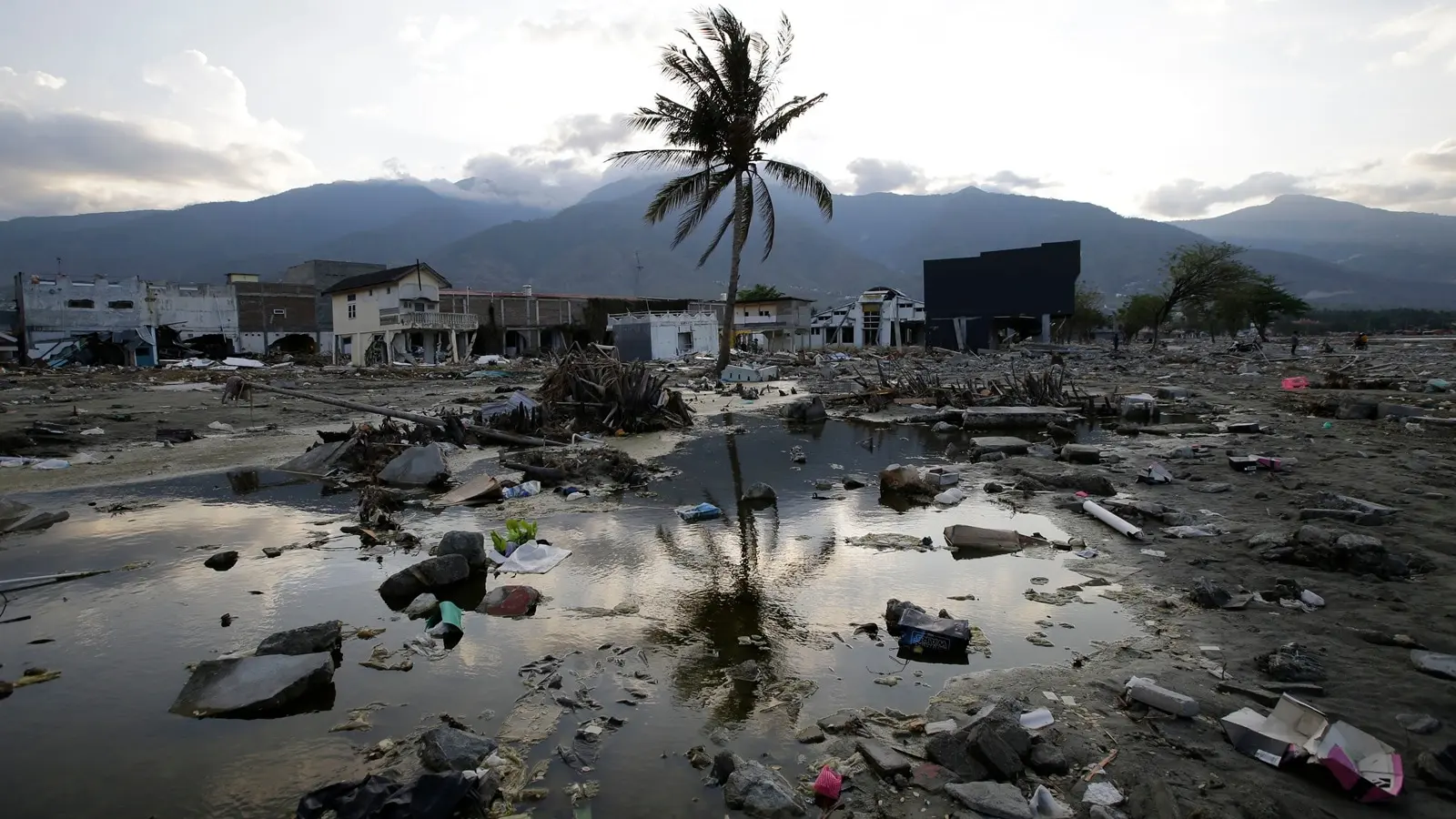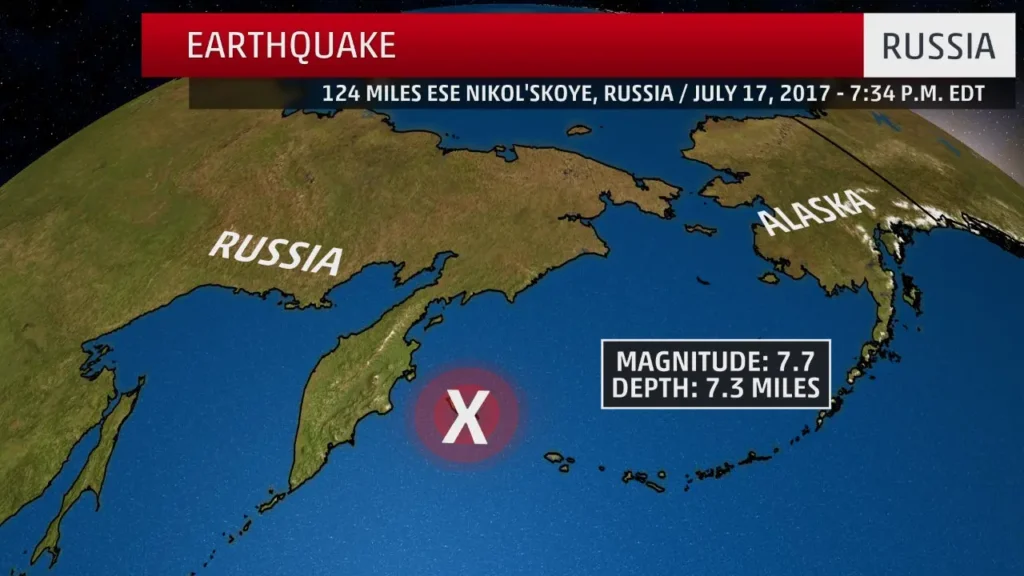
What’s Shaking in Russia?
Earthquakes strike without warning. In Russia’s far eastern regions, tremors are not unusual—they’re part of daily life. Stretching across multiple seismic zones, Russia regularly experiences tectonic activity, especially in the Kamchatka Peninsula, Kuril Islands, and Sakhalin.
If you’re searching for an update on a Russia earthquake today, you’re likely reacting to real-time shaking or reading headlines. This article covers the latest seismic activity, key hotspots, and historical context on some of the country’s most powerful quakes.
Russia Earthquake Today – What We Know
On July 31, 2025, a magnitude 5.6 earthquake struck near Petropavlovsk-Kamchatsky in the Kamchatka Peninsula at 3:18 PM local time. The quake originated at a shallow depth of 10 km, making it widely felt across nearby areas.
No tsunami warnings were issued, and early reports indicate no significant damage or injuries. Residents shared accounts of shaking furniture and brief evacuations. Though moderate, the quake reminded locals of the region’s constant seismic threat.
This event was confirmed by both the European-Mediterranean Seismological Centre (EMSC) and Russian geological services.
Was There an Earthquake in Russia Today?
Yes. A 5.6-magnitude quake struck Kamchatka earlier today. While the region is no stranger to seismic activity, each event serves as a reminder of the area’s vulnerability.
For accurate, real-time tracking, platforms like USGS, EMSC, or Russia’s official seismic monitoring sites provide current data and alerts.
Recent Earthquakes in Russia

Russia has seen a notable uptick in seismic activity over the past week. Here’s a snapshot of recent quakes:
- July 31 – Kamchatka Peninsula – M5.6 – Depth 10 km
- July 29 – Kuril Islands – M4.8 – Depth 30 km
- July 27 – Sakhalin Region – M3.9 – Depth 14 km
- July 25 – Bering Sea (near Chukotka) – M5.1 – Depth 17 km
- July 23 – Far East Russia – M4.6 – Depth 12 km
Residents in Kamchatka and the Kurils noted shaking strong enough to cause alarm, though no major damage occurred. Even smaller tremors continue to keep locals alert.
Kamchatka: Russia’s Seismic Epicenter
Kamchatka is Russia’s most active seismic zone. Positioned along the Pacific Ring of Fire, this peninsula lies at the junction of major tectonic plates, making it a hotspot for both earthquakes and volcanic eruptions.
Recent activity includes:
- May 2025 – A 6.2 magnitude offshore quake triggered a tsunami watch.
- February 2024 – A swarm of smaller quakes, likely aftershocks, occurred throughout the region.
Kamchatka residents are accustomed to regular evacuation drills, siren tests, and emergency preparedness plans—essential in a place where natural hazards are routine.
Strongest Earthquakes in Russian History
Russia has experienced some of the world’s most powerful quakes. Here are five historic events that shaped the nation’s seismic history:
- Kamchatka, 1952 – Magnitude 9.0
One of the largest earthquakes ever recorded. It generated a massive tsunami, affecting Japan, Hawaii, and the U.S. West Coast. Hundreds were killed. - Kuril Islands, 1963 – Magnitude 8.5
Though centered offshore, its power was felt far across the Pacific basin. - Sakhalin (Neftegorsk), 1995 – Magnitude 7.6
A devastating quake that destroyed the town of Neftegorsk, claiming over 2,000 lives. - Kamchatka, 2006 – Magnitude 7.7
Caused landslides and infrastructure damage. Fortunately, the remote location limited human impact. - Kuril Islands, 2007 – Magnitude 8.1
Deep undersea quake that generated a minor tsunami. Minimal onshore damage was reported.
These events highlight the real risks for those living in Russia’s eastern seismic zones.
Why Russia Experiences Frequent Earthquakes
The primary cause of Russia’s earthquakes lies in its geology. The eastern edge of the country is a complex tectonic intersection, where the Pacific Plate collides with the North American Plate, among others.
This plate movement creates friction and pressure. When that pressure is suddenly released, it results in an earthquake. Kamchatka, the Kuril Islands, and Sakhalin are particularly vulnerable due to their proximity to these plate boundaries.
Western Russia, including cities like Moscow and St. Petersburg, sits on much more stable ground and rarely experiences seismic activity.
How to Stay Safe During an Earthquake in Russia
If you live in or are visiting an earthquake-prone region in Russia, knowing how to respond can save lives. Here are essential safety tips:
- Indoors: Drop to the ground, take cover under sturdy furniture, and hold on. Stay away from windows and shelves.
- In Bed: Remain where you are. Protect your head with a pillow.
- Avoid Elevators: Use stairs if evacuation becomes necessary.
- Outdoors: Move to an open area, away from buildings, trees, and power lines.
- Coastal Areas: If a tsunami alert is issued, move inland and to higher ground immediately.
Russia’s Ministry of Emergency Situations provides guidelines, and Ready.gov offers additional resources for international travelers.
Stay Alert, Stay Prepared
Today’s quake in Kamchatka is a reminder of the region’s seismic volatility. While this event didn’t result in damage, it underscores the importance of readiness in areas prone to natural disasters.
Monitoring updates, setting up alerts, and knowing how to respond can make a critical difference. Whether you’re a resident or visitor, staying informed is the first step toward staying safe.
Frequently Asked Questions
-
1. Where did the earthquake hit in Russia today?
The July 31, 2025 earthquake struck near Petropavlovsk-Kamchatsky in the Kamchatka Peninsula. It registered a magnitude of 5.6.
-
2. Is Kamchatka prone to earthquakes?
Yes. Kamchatka is one of Russia’s most active seismic zones, located on the Pacific Ring of Fire where tectonic plates frequently shift.
-
3. Was a tsunami warning issued after the earthquake?
No. Despite the 5.6 magnitude, no tsunami warning was issued, and no major damage was reported.
-
4. How can I track earthquakes in Russia?
You can monitor real-time data through platforms like the USGS, EMSC, or Russia’s official seismic monitoring services.
-
5. What are the strongest earthquakes in Russia’s history?
Notable quakes include the 1952 Kamchatka quake (M9.0) and the 1995 Neftegorsk quake (M7.6), both causing significant impact.




Leave a Reply